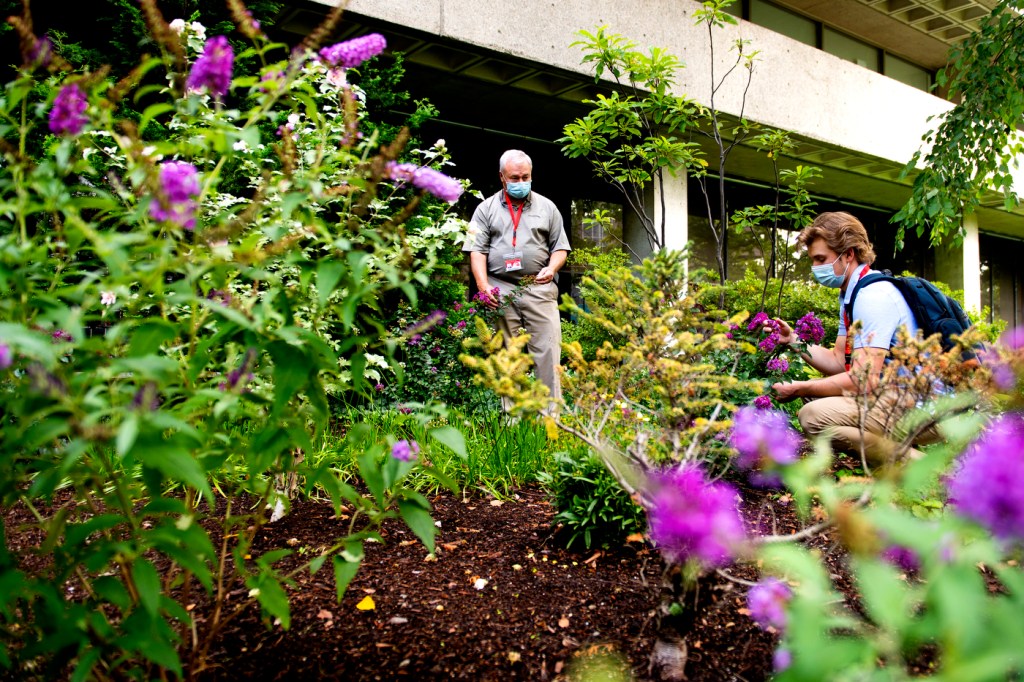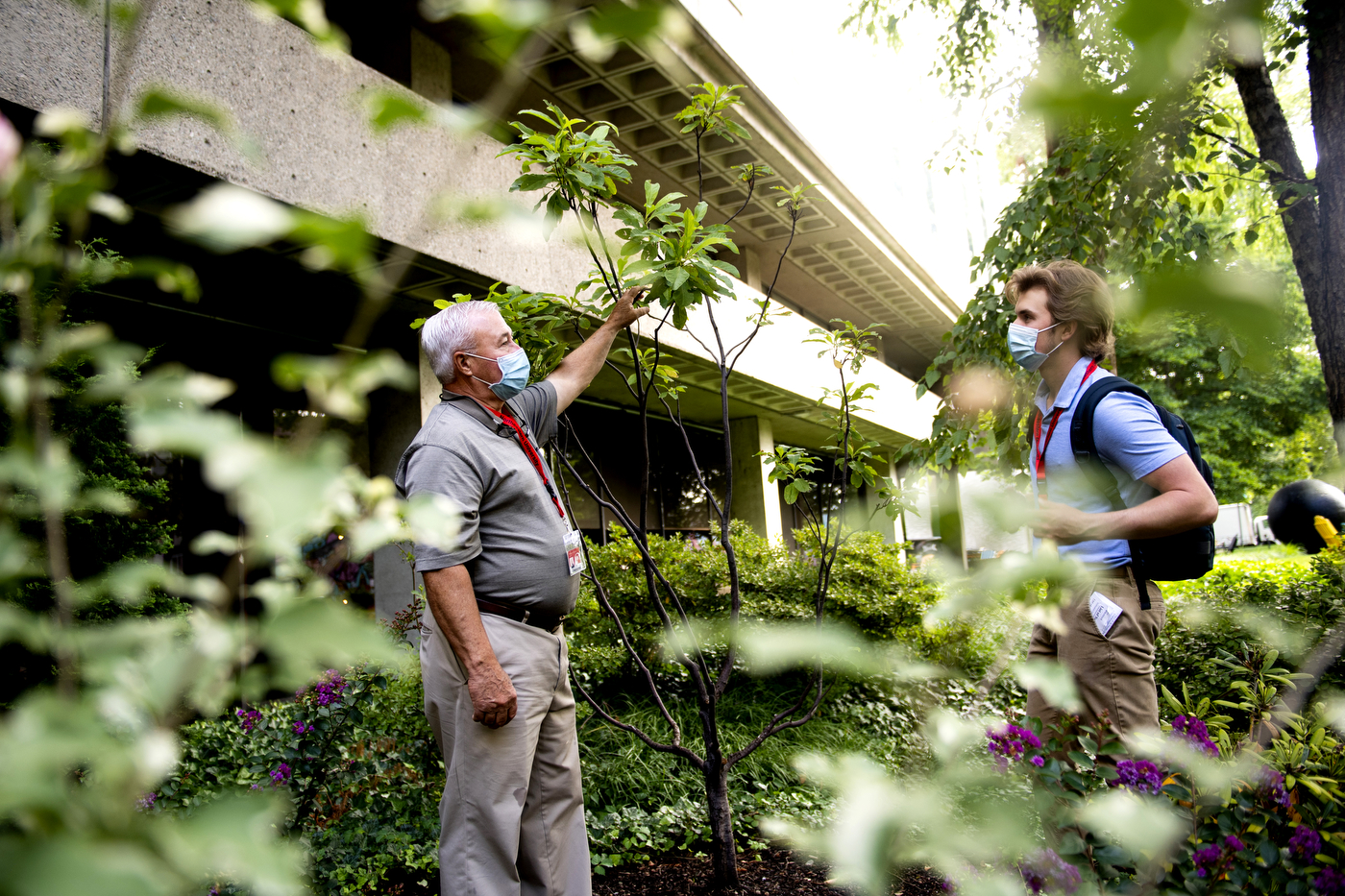What tree is that? Find out with this interactive map of Northeastern’s arboretum.

Looking for a way to enjoy nature without having to make the trek outside of Boston? Go no further than the arboretum on Northeastern’s Boston campus.
There’s plenty of places to relax in the shade while enjoying the last sunny days of summer, or admire the creeping color-changing trees as the iconic New England autumn approaches.
And now visitors can dive deeper into the flora during their visit with the arboretum’s newly-launched website, featuring an interactive map that allows visitors to learn more details about the urban wildlife around them.
“The website was made to enhance all the information with a user-friendly navigation to help visitors optimize their time spent at the arboretum both online and in person,” says Christine Jones, who is a project delivery coordinator in facilities management at the university, and worked on the website.



The Boston campus is a level two accredited arboretum with ArbNet—a designation Northeastern recently received, making it the only university in Boston with an arboretum on its campus—and features over 1,400 individual trees and 143 tree species.
And the new website’s interactive map lists just about every tree on the arboretum, and includes details such as the species, Latin name, and any defects—from the callery pear (or Pyrus calleryana, if you’re curious) on the library quad to the honeylocust (Gleditsia triacanthos) outside Matthews Arena.
The website had been in the works for several months, while creators made sure all information was easily accessible to users.

Marc Carlson examines the trunk of a hardy rubbertree. Photo by Matthew Modoono/Northeastern University
“We really needed to make sure we get all the information that people could possibly want to know about onto the site in an organized manner,” Jones says.
The map allows visitors—who come for enjoyment or educational research programs—to take a self-guided tour of the arboretum, and see the plant life on campus in a new light.
“They can walk around, get the plant names, how long it’s been there, and even attributes of the plant and why it’s an important part of the arboretum collection—it will all be at people’s fingertips,” says Chuck Doughty, Northeastern’s landscaping program director.
And for those looking for even more information, the arboretum’s social media pages highlight what plants are in bloom.

The map also provides a written record of trees for the university, and the software will help with a tree-tagging effort this fall. Facilities staff will affix each tree with a credit-card sized tag that contains information about the species.
“One will go up in the tree out of reach of the general public, and then there’s going to be one either attached to the tree with special attachment devices,” Doughty says. On the smaller trees, staff “will have a stake we push in the ground where people could pull the stake out and read the label.”
Doughty says he’s often gotten questions about the trees on campus, and if there is a book with all the trees in it, and while he is always happy to talk with visitors, he is excited to have the information available for everyone on the website.
“This will be something that will be here for a lot longer than me,” Doughty says. “So people could do a little research and come up with their own information and it’s really at a time I think when a good walk in the urban woods is really a good idea.”
For media inquiries, please contact media@northeastern.edu.





